One of the best loved stories for the festive season is ‘A Christmas Carol’. A traditional ghost story for retelling around the fire on a cold Christmas Eve, it is a timeless classic beloved by those from all walks of life.

Charles Dickens wrote this novella in 1843 and it was published just in time for the festivities that same year.
It is a short but powerful read; Dickens rarely pulled his punches when it came to thorny social or moral issues and this morality play by any other name does not disappoint.
Dickens took to giving public readings of the story in 1849, a tradition so popular that he gave a further 127 performances until 1870, the year of his death.
‘A Christmas Carol’ was immensely well-received on publication and proved a financial success with numerous editions, the first selling out by Christmas Eve of 1843.
It has subsequently never been out of print and many adaptions in stage and film have occurred over the last century. So, what made this humble novella so popular?
The narrative follows a simple storyline: selfishness (darkness), enlightenment, and redemption.
Ebeneezer Scrooge is an ageing miserly businessman who has no time for Christmas or the spirit it conveys – charity, family, and love.
These three things Scrooge has eschewed due to childhood misery, the selfishness of youth, and the love of money. The scene begins on Christmas Eve, with Scrooge in his counting house in the City of London.
His bitterness for the season that day is spat forth at anyone who graces his presence, from his faithful clerk Bob Cratchit to his nephew Fred, or two city businessmen collecting money for the poor.
Bob is grudgingly given a day off for Christmas Day, Fred is given short shrift for inviting his uncle to a festive dinner, and the collectors for charity are told in no uncertain terms that he will not be contributing, “are there no prisons… And the Union workhouses?” is his famous retort.
Scrooge gave up on love of humanity for his love of money and suffered greatly for it.
Divided into five chapters (or ‘staves’ as Dickens calls them) the story charts the symbolic journey Scrooge will experience. In the context of Christopher Booker’s Seven Basic Plots, ‘A Christmas Carol’ sits firmly in the Rebirth slot.
Simple definition: An event forces the main character to change their ways and often become a better individual.
In Scrooge’s case it is three events that precipitates his redemption and metamorphoses from darkness to light, something that would at first glance appear to be an impossible task. Dickens describes him almost immediately:
Scrooge! A squeezing, wrenching, grasping, scraping, clutching, covetous old sinner Hard and sharp as flint, from which no steel had ever struck out generous fire; secret, and self-contained, and solitary as an oyster.
The cold within him froze his old features, nipped his pointed nose, shrivelled his cheek, stiffened his gait; made his eyes red, his thin lips blue; and spoke out shrewdly in his grating voice.
A frosty rime was on his head, and on his eyebrows, and his wiry chin.
Dickens, like most writers, drew on resources from his own experiences – the conflicted relationship with his father, and the disastrous riches to rags experience of his late childhood.
Charles’ early life was middle-class and seemingly idyllic but in 1822, his father John Dickens was forced by his creditors into the Marshalsea debtors’ prison in Southwark, London in 1824.
His wife and youngest children joined him there, as was the practice at the time. Their affluent lifestyle had been the product of his father living beyond his means.
Charles was sent to live with a family friend, visiting his family at the prison on Sundays. To pay for his board and help his family, he was forced to leave school and work a 10-hour day in a Blacking Warehouse.
After his father’s release from prison, Charles’ release from work was not allowed. The whole experience was humiliating for the young man; that and his discovery of the poverty and maltreatment of his fellow man formed his narrative.
The fear (and understanding) of poverty, plus the withholding of generosity and love by his parents was woven into the warp and weft of his writings.
Whilst ‘A Christmas Carol’ is evidently not a Masonic story, it is however, like Freemasonry, a story of morality, veiled in allegory and illustrated by symbols.
If anything, Dickens’ story is a powerful portrayal of the transforming effect of inner reflection and the application of that wisdom.
In the Introduction to ‘A Christmas Carol’ edited by Richard Kelly (Broadview, 2003) it explores the rich layered symbolism of Christmas within the story.
Dickens loved traditions, social archetypes, and allegories, and he used these to great effect for both his characters and the situations described in his books.
In ‘A Christmas Carol’ he brought in aspects of duality – light and dark, birth and death, youth and old age, the changing of the seasons and the death and rebirth associated with the winter solstice.
Cold and dark are prominent themes – even the character of Ebenezer is the embodiment of winter;
“he carried his own low temperature always about with him; he iced his office in the dog days and didn’t thaw it one degree at Christmas…darkness is cheap, and Scrooge liked it.”
So, what are the parallels between ‘A Christmas Carol’ and Freemasonry?
Bear in mind this is just entertaining conjecture – the story is not about Freemasonry, but it does embody many of the important concepts prevalent in the three degrees of the Craft, and the important message that Freemasonry as a whole encompasses.
Scrooge’s journey from miserly misery to enlightened rebirth
Marley’s Ghost – the Gatekeeper

“Old Marley was as dead as a door-nail.” – illustration by John Leech (1843)
IMAGE LINKED: wikimedia Attribution 4.0 International (CC BY 4.0)
It is the visit from Scrooge’s dead business partner that begins his journey.
After he leaves his office, Scrooge returns home. Jacob Marley appears to him as a ghostly image on the knocker on his front door, which Scrooge hastily passes through, dismissing the vision with a “Pooh, pooh!” .
Marley (with some artistic licence here) could be seen as a gatekeeper, Tyler, or at a stretch, the proposer of Scrooge’s “initiation” into his new life.

Marley’s Ghost – illustration by John Leech (1843)
IMAGE LINKED: wikimedia Attribution 4.0 International (CC BY 4.0)
“You are fettered,” said Scrooge, trembling. ” Tell me why.”
“I wear the chain I forged in life,” replied the Ghost. “I made it link by link, and yard by yard; I girded it on of my own free will, and of my own free will I wore it.
Is its pattern strange to you? “
Scrooge trembled more and more.
“Or would you know,” pursued the Ghost,” the weight and length of the strong coil you bear yourself? It was full as heavy and as long as this, seven Christmas Eves ago. You have laboured on it since. It is a ponderous chain! “
Marley, it seems, has had time to see the error of his ways; he later appears in full ghostly form weighed down by layers of heavy chains, keys, and cashboxes.
He bemoans the fact that he has had no peace since his death, seven years ago on Christmas Eve.
Leading him to the window, Marley shows Scrooge a vision of all those spirits destined to roam the earth weighed down by their greed and selfishness.
He warns Scrooge that if he continues on his current miserable path, he too will be destined to the same fate but if he eschews his miserly ways and understands the nature of charity (“divested of all metals”?), he may be redeemed.
The chance for redemption is nigh: for he will be visited by three spirits over three nights.
Below is a comparison of the allegorical parallels between the story and Freemasonry:
The First Visit – the Ghost of Christmas Past

The Spirit of Christmas Past meets Scrooge – illustration by Sol Eytinge Jr. (1868)
IMAGE LINKED: wikimedia Attribution 4.0 International (CC BY 4.0)
The first spirit to appear is that of the Ghost of Christmas Past, who takes Scrooge back to his boyhood, a reminder of a time when he was more innocent.
The scenes reveal the young Ebeneezer’s lonely childhood at boarding school. Indications are given that his father had not been a caring man, yet, his beloved sister Fan arrives to take him home promising that “father has changed”.
The ghost then transports them to a Christmas party given by Mr Fezziwig, Scrooge’s first employer, who treated him like a son.
Then Scrooge’s forlorn and neglected fiancée Belle is shown ending their relationship, as she realises that he will never love her as much as he loves money.
In a final visit they fast-forward a few years to witness a now-married Belle with her large, happy family on the Christmas Eve that Marley died.
Scrooge, upset at hearing Belle’s description of the man that he has become, demands that the ghost remove him from the house.
Eviscerated by his feelings, and the harsh truth of how his past actions have created his lonely state, Scrooge takes an extinguisher-cap and presses it down on the ghost attempting to block out the light he cannot face – the room darkens but the light streams out from under the cap.

Scrooge Extinguishes the First of the Three Spirits – illustration by John Leech (1843)
IMAGE LINKED: wikimedia Attribution 4.0 International (CC BY 4.0)
The First Degree – Initiation
In Masonry the first degree, that of the Entered Apprentice, represents youth and the basic lessons in life: charity to mankind, the importance of truth and keeping one’s word.
It is a time of deep introspection and learning, of making good choices and forging new relationships.
The preparation for the degree also involves being divested of all metals, reinforcing that stark reminder that we should be charitable, for any wealth we have can be taken from us at any time.
Light – or truth – is a big focus of the First Degree, for the candidate must remove his hoodwink and change from a state of darkness to light.
The Second Visit – the Ghost of Christmas Present

Scrooge encounters the Ghost of Christmas Present – illustration by John Leech (1843)
IMAGE LINKED: wikimedia Attribution 4.0 International (CC BY 4.0)
The second spirit, the Ghost of Christmas Present, takes Scrooge to a bustling market with people buying the makings of their Christmas dinner.
The ghost then takes Scrooge to Bob Cratchit’s family feast and introduces his youngest son, Tiny Tim, a cheerful boy despite his evident illness.
The spirit informs Scrooge that Tiny Tim will die unless the course of events changes but then hastens to quote Scrooge’s earlier statement that the poor, ill or dying can help “decrease the surplus population”.
Afterwards, they travel to celebrations of Christmas in a miner’s cottage, a lighthouse, and a ship at sea.
The spirit then takes them to Scrooge’s nephew’s Christmas party. Before disappearing, the spirit reveals from under his robe two emaciated children named Ignorance and Want.
He tells Scrooge to beware them. This was Dickens’ fullest appeal to his readers to be socially aware – to educate themselves on the way the world works and if possible, to alleviate suffering and foster brotherly love.

‘Ignorance and Want’ – illustration by John Leech (1843)
IMAGE LINKED: wikimedia Attribution 4.0 International (CC BY 4.0)
“Spirit! are they yours?” Scrooge could say no more.
“They are Man’s,” said the Spirit, looking down upon them. “And they cling to me, appealing from their fathers. This boy is Ignorance. This girl is Want. Beware them both, and all of their degree, but most of all beware this boy, for on his brow I see that written which is Doom, unless the writing be erased. Deny it!” cried the Spirit, stretching out its hand towards the city. “Slander those who tell it ye! Admit it for your factious purposes, and make it worse. And bide the end!”
“Have they no refuge or resource?” cried Scrooge.
“Are there no prisons?” said the Spirit, turning on him for the last time with his own words. “Are there no workhouses?”
The Spirit’s rhetoric reminds us that poverty is not a problem of the past or the future but also of the present. After mocking Scrooge’s concern for their welfare, he disappears at the stroke of midnight.
The Second Degree – Passing
The second degree, that of the Fellow Craft represents manhood; the middle period of our lives.
Referred to as the ceremony of ‘Passing’, it teaches us to ponder on our path in life, in this case the passage from youth (Initiation) to adulthood: from apprentice to journeyman.
It is during this degree that we are taught the importance of being a responsible adult and to utilise our continuing education and work; we are encouraged to study the seven liberal arts and sciences and employ the daily advancement in our Masonic knowledge.
Ignorance is to be avoided, want balanced with need. We strive to be ‘on the level’; accepting others’ positions in life and not comparing them unfairly to our own – fostering balance, tolerance and the concepts of equity and equality.
Being aware of our social responsibilities and how we contribute to that is a pertinent lesson for us all.
The Third Visit – the Ghost of Christmas Yet to Come

The Last of the Spectres – illustration by John Leech (1843)
IMAGE LINKED: wikimedia Attribution 4.0 International (CC BY 4.0)
The third spirit, the Ghost of Christmas Yet to Come, appears when the clock strikes two. The chilling wraith shows Scrooge a Christmas Day in the future.
Ever silent it reveals scenes showing the death of a man, evidently unpopular and unloved as his funeral is attended by local businessmen only on condition that lunch is provided.
His meagre possessions are being stolen from his deathbed by his former charwoman, laundress and undertaker who take them to a ‘fence’ in the local slum whereby they fight over the price.
When Scrooge asks the spirit whether any person feels emotion over this man’s death, he is shown the pleasure of a poor couple who rejoice that his death gives them more time to put their finances in order.
Scrooge then implores to see tenderness connected with death – the scene changes to Bob Cratchit and his family mourning the death of Tiny Tim.
The final destination is a neglected grave; the tombstone bearing Scrooge’s name. At this point Ebeneezer breaks down, repentant and begging for forgiveness.

Scrooge beseeches the Ghost of Christmas Yet to Come for deliverance – illustration by John Leech (1843)
IMAGE LINKED: wikimedia Attribution 4.0 International (CC BY 4.0)
“Spirit!” he cried, tight clutching at its robe, “hear me! I am not the man I was. I will not be the man I must have been but for this intercourse. Why show me this, if I am past all hope!
For the first time the hand appeared to shake.
“Good Spirit,” he pursued, as down upon the ground he fell before it, “your nature intercedes for me, and pities me.
“Assure me that I yet may change these shadows you have shown me, by an altered life.”
The kind hand trembled.
“I will honor Christmas in my heart and try to keep it all the year. I will live in the Past, the Present, and the Future. The Spirits of all Three shall strive within me. I will not shut out the lessons that they teach. O tell me I may sponge away the writing on this stone! “
The Third Degree – Raising
From Initiation of youth, then the Passing into adulthood, the Third Degree brings our attention to ageing and our ultimate death.
Memento Mori – remember we die. Not only does the Master Mason have to face this impending reality but he is offered the opportunity to be “Raised” or “reborn” to a state of maturity whereby he can utilise all the wisdom and education he has received on his journey through the Three Degrees.
The takeaway from the Third degree is the importance of living life true to the principles of Freemasonry.
To allow us to make peace with our god and the relationship to our mortality; for ultimately, how a man lives and dies is the most important message that Freemasonry offers.

The new Scrooge! Honouring Christmas in his heart – illustration by John Leech (1843)
IMAGE LINKED: wikimedia Attribution 4.0 International (CC BY 4.0)
The Rebirth
Scrooge wakes up from his night of learning a changed man. He is positively ecstatic, and true to his word ‘to honour Christmas in my heart and try to keep it all the year’, not only makes a large donation to the charity he rejected the previous day, but he also anonymously sends a large turkey to the Cratchit’s home for Christmas dinner, then spends the afternoon with Fred’s family.
The following day he gives Cratchit a pay rise, and over the following months, becomes a benevolent grandfather figure to Tiny Tim.
From then on Scrooge treats everyone with kindness, generosity, and compassion, embodying that eternal spirit of Christmas.
In some respects, the visits from the Three Spirits reflect the Three Degrees quite nicely – simply put birth, life and death – for Scrooge, his self-examining metaphysical journey was achieved in one night (a bit like One Day Masonry?) now those lessons need to be applied. He swears an oath to the final ghost that he will:
…honour Christmas in my heart and try to keep it all the year. I will live in the Past, the Present, and the Future. The Spirits of all Three shall strive within me. I will not shut out the lessons that they teach.
Dickens ends his cautionary tale with heartening words about the newly enlightened Ebeneezer:
He had no further intercourse with Spirits, but lived upon the Total Abstinence Principle, ever afterwards; and it was always said of him, that he knew how to keep Christmas well, if any man alive possessed the knowledge. May that be truly said of us, and all of us!
And so, as Tiny Tim observed, God bless Us, Every One

A CHRISTMAS CAROL – Full AudioBook by Charles Dickens
About Charles Dickens
– ‘the man who invented Christmas’

Charles Dickens was born to a middle-class family which got into financial difficulties as a result of the spendthrift nature of his father John. In 1824 John was committed to the Marshalsea, a debtors’ prison in Southwark, London. Dickens, aged 12, was forced to pawn his collection of books, leave school and work at a dirty and rat-infested shoe-blacking factory.
The change in circumstances gave him what his biographer, Michael Slater, describes as a “deep personal and social outrage”, which heavily influenced his writing and outlook.
By the end of 1842 Dickens was a well-established author, having written six major works, as well as several short stories, novellas and other pieces.
On 31 December that year he began publishing his novel Martin Chuzzlewit as a monthly serial; the novel was his favourite work, but sales were disappointing and he faced temporary financial difficulties.
Celebrating the Christmas season had been growing in popularity through the Victorian era.
The Christmas tree had been introduced in Britain during the 18th century, and its use was popularised by Queen Victoria and Prince Albert. Their practice was copied in many homes across the country.
In the early 19th century there had been a revival of interest in Christmas carols, following a decline in popularity over the previous hundred years. The publication of Davies Gilbert’s 1823 work “Some Ancient Christmas Carols, With the Tunes to Which They Were Formerly Sung in the West of England” and William Sandys’s 1833 collection “Christmas Carols, Ancient and Modern” led to a growth in the form’s popularity in Britain.
Dickens had an interest in Christmas, and his first story on the subject was “Christmas Festivities”, published in Bell’s Weekly Messenger in 1835; the story was then published as “A Christmas Dinner” in Sketches by Boz (1836).
“The Story of the Goblins Who Stole a Sexton”, another Christmas story, appeared in the 1836 novel The Pickwick Papers. In the episode, a Mr Wardle relates the tale of Gabriel Grub, a lonely and mean-spirited sexton, who undergoes a Christmas conversion after being visited by goblins who show him the past and future.
Slater considers that “the main elements of the Carol are present in the story”, but not yet in a firm form.
The story is followed by a passage about Christmas in Dickens’s editorial Master Humphrey’s Clock.
The professor of English literature Paul Davis writes that although the “Goblins” story appears to be a prototype of A Christmas Carol, all Dickens’s earlier writings about Christmas influenced the story.
Source Wikipedia: https://en.wikipedia.org/wiki/Charles_Dickens
Image: By Jeremiah Gurney – Heritage Auction Gallery,
Article by: Philippa Lee. Editor

Philippa Lee (writes as Philippa Faulks) is the author of eight books, an editor and researcher.
Philippa was initiated into the Honourable Fraternity of Ancient Freemasons (HFAF) in 2014.
Her specialism is ancient Egypt, Freemasonry, comparative religions and social history. She has several books in progress on the subject of ancient and modern Egypt. Selection of Books Online at Amazon

A Christmas carol in prose; being a ghost story of Christmas
By: Charles Dickens
A nicely illustrated edition of the classic A Christmas Carol by Charles Dickens with 30 original illustrations.
Use Amazon’s Lookinside feature to compare this edition with others. Our version has:
• More than 30 illustrations from a 1900 edition.
• Text that has been proofread to avoid errors common in other versions.
• A beautiful cover from an early edition.
• The complete text in an easy-to-read font similar to the original.
A Christmas Carol was first published in London by Chapman & Hall in 1843. It has become a Christmas classic and has been continuously in print since its first release, as well as being made into numerous plays and movies. It tells the story of Ebenezer Scrooge, an elderly miser who is visited by the ghost of his former business partner Jacob Marley and the spirits of Christmas Past, Present and Yet to Come.
After their visits, Scrooge is transformed into a kinder, gentler man. It explores themes about the treatment of the poor and the ability of people to reform themselves. It is worth reading every Christmas.

The Man Who Invented Christmas
By: Lee Standiford
Just before Christmas in 1843, a debt-ridden and dispirited Charles Dickens wrote a small book he hoped would keep his creditors at bay. His publisher turned it down, so Dickens used what little money he had to put out A Christmas Carol himself. He worried it might be the end of his career as a novelist.
The book immediately caused a sensation. And it breathed new life into a holiday that had fallen into disfavor, undermined by lingering Puritanism and the cold modernity of the Industrial Revolution. It was a harsh and dreary age, in desperate need of spiritual renewal, ready to embrace a book that ended with blessings for one and all.
With warmth, wit, and an infusion of Christmas cheer, Les Standiford whisks us back to Victorian England, its most beloved storyteller, and the birth of the Christmas we know best. The Man Who Invented Christmas is a rich and satisfying read for Scrooges and sentimentalists alike.

A Christmas Carol
By: Charles Dickens, Richard Kelly (Editor)
Emerging from Dickens’s preoccupation in the early 1840s with issues of poverty, ignorance, and cruelty, this classic story of Ebeneezer Scrooge, visited by four ghosts on Christmas Eve, was first published in 1843 to strong reviews and popular success.
The Broadview edition uses the first edition with original drawings by John Leech.
This edition also includes Washington Irving’s descriptions of English Christmas customs; essays by Dickens on Christmas, and his essay “A Walk in a Workhouse”; a British government report on the lives of child labourers; a speech by Dickens on the importance of educating the poor; selected letters; contemporary reviews; and a listing of film, television, and radio adaptations of the book.
Recent Articles: masonic history
 Protestantism and Masonic Influence in Brazil Discover the untold story of how Freemasons helped Southern Americans immigrate to Brazil post-Civil War, fostering economic and educational growth in Santa Bárbara d’Oeste and Americana. Learn about their pivotal role in establishing Protestant churches and ensuring the secularity of the Brazilian State amidst a Catholic-dominated society. |
 Explore the proper use of the sacred word in Brazilian Freemasonry through an analysis of Masonic literature and Bible translations. Uncover the errors in pronunciation and the need for corrections to maintain liturgical coherence in rituals. Discover insights on Masonry, rituals, and the Hebrew word Boaz. |
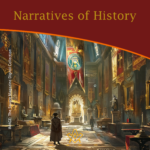 Narratives of History |
 A Very Royal Sesquicentenary |
 Unveiling the Enigma: Discover the Royal Society's Legacy and its Impact on Science. Delve into the fascinating history of the Royal Society, the prestigious UK academy shaping scientific progress since 1660. Explore its pivotal role in advancing knowledge, fostering collaboration, and unlocking the secrets of the universe. Prepare to be amazed! |
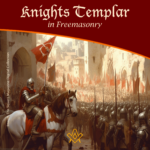 Knights Templar in Freemasonry Uncover the Mysteries of the Knights Templar in Freemasonry! Delve into the intriguing world where chivalry and symbolism intertwine. Discover the captivating rituals and ancient secrets behind the Knights Templar Masonic Orders. Explore the historical connection and delve into the enigmatic narratives that continue to fascinate enthusiasts today. Unveil the hidden truths now! |
 The Royal Arch stands as the rainbow of promise in the Ritual; it stands as the promise of the resurrection; of that which was lost and that it shall be recovered. The question arises as to whether the Master's Word was originally communicated in the Third Degree? On this point there is some diversity of opinion. Originally published in 1915, this insight into the Fourth Degree – the Holy Royal Arch – is as relevant today as it was over 100 years ago. |
 Unveiling the Mysteries of Druidism: Discover the Intriguing Connection with Freemasonry. Explore the ancient spiritual practice of Druidism and its fascinating ties to the enigmatic world of Freemasonry. Delve into the shared symbolism and rituals that have captivated minds for centuries. Unlock the secrets of these intertwined traditions today! |
 Uncover the legacy of freestone masons and their pivotal role in crafting medieval cathedrals. Discover the artistry behind their techniques, the hierarchy within their craft, and the enduring impact of their intricate carvings. A deep dive into the world of these master craftsmen awaits you! |
 Unearth the intriguing journey from Vincha Culture to Freemasonry. Discover how ancient building methods intertwine with modern Masonic philosophies. This exploration will shed light on the fascinating link between the Serbian term "shestarenye" and the symbolic significance of the compass in Freemasonry. |
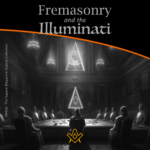 Freemasonry and the Illuminati Unravel the enigmatic world of Freemasonry and the Illuminati in our latest exposé. Dive into centuries-old mysteries, debunk conspiracy theories, and discover the truth behind these elusive societies. Are they puppet masters or mere myths? Join us as we dissect history and fact from fiction. |
 The Île des Templiers, or “Island of the Templars” lies within a leafy park in Paris. The execution site of Jacques du Molay, the last Grand Master of the Knights’ Templar bears a plaque with the epitaph ‘A cet endroit / Jacques de Molay / Dernier grand maître / de l'ordre du temple / a été brûlé le 18 Mars 1314’ (‘In this location / Jacques de Molay / Last grand master / of the order of the temple / was burned on 18 March 1314’) |
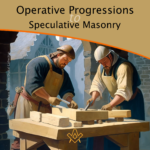 Operative Progressions to Speculative Masonry Both Operative and Speculative Masonry are an important part of the modern fraternity of Freemasonry, which combines elements of both traditions. Today, Freemasonry is a fraternity that is open to men of good character, who are interested in personal development and in making a positive contribution to their communities. |
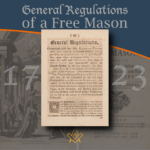 General Regulations of a Free Mason, 1723 General Regulations of a Free Mason as contained in Anderson's Constitutions of the Freemasons, published 1723. the Regulations are of great historical interest. Compiled by George Payne, the second Grand Master of the Premier Grand Lodge of England, they were printed in 1722/3, thus published just over five years after the formation of the Grand Lodge 1717. |
 The Genesis of the 1723 Book of Constitutions 2023, marks the three hundredth anniversary of the publication of the first printed Book of Constitutions of the Grand Lodge formally established in London two years previously. This is an anniversary whose significance extends beyond freemasonry. A paper by Andrew Prescott |
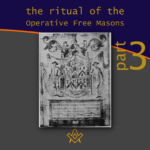 The Ritual of the Operative Free Masons - P3 Existing Operative Free Masons. The ritual I am about to refer, is that of "The Worshipful Society of Free Masons, Rough Masons, Wallers, Slaters, Paviors, Plaisterers, and Bricklayers." By Thomas Carr, M.D., P. M. Honorary Member of the Guild of Operative Free Masons |
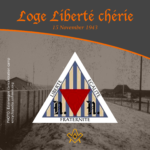 Liberté chérie was a Masonic Lodge founded in 1943 by Belgian Resistance fighters and other political prisoners at Esterwegen concentration camp. It was one of the few lodges of Freemasons founded within a Nazi concentration camp during the Second World War. |
 The Ritual of the Operative Free Masons - P2 If anyone doubts the fact that the formation of Speculative Free Masonry was due to and based upon Operative Free Masonry, it is quite easy to convince him of his error if he will only study the first Book of Constitutions. By Thomas Carr, M.D., P. M. Honorary Member of the Guild of Operative Free Masons |
 In 1881, Freemasonry rose from the ashes of a fire in the mining town of Kokomo, Summit County, Colorado. Corinthian Lodge No. 42, along with Kokomo, no longer exists but it holds the record of having been – at an elevation of 10,618 feet – the highest Masonic Lodge in the USA. |
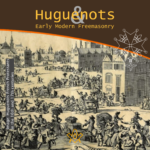 The Huguenots and Early Modern Freemasonry The Huguenots influence in the development of early modern Freemasonry at the time of the formation of the Grand Lodge in London around 1717 / 1723. |
 November is a month of reflection – perhaps due to the fact that we are getting close to the years' end – but also because Remembrance / Armistice Day (11 November) is a significant date in most countries' diaries. |
 Speculative Freemasonry, as practise by Grand Lodge of England, was officially born just over three hundred years ago, is today an international organisation, counting over six million members. It has been subjected to persecution, suppression, and abolition throughout its history. In its infancy, only a couple of decades after its official birth, it had already become a target. |
 The Ritual of the Operative Free Masons - P1 The original paper was written, first, to prove that Speculative Free Masonry was derived from Operative Free Masonry; second, to give some account of the Operative Free Masons, of their Ritual, and of their customs. By Thomas Carr, M.D., P. M. Honorary Member of the Guild of Operative Free Masons |
 American Fraternalism in the 19th and Early 20th Centuries The late 19th and early 20th centuries in the United States has been called the "Golden Age of Fraternalism." How did this come about and why was the idea of joining a fraternal organization so popular? We will explore this question and examine the regalia used by many fraternal organizations in this period. |
 Societas Draconistarum, meaning "Society of the Dragonists"– was a chivalric Order for selected nobility, founded in 1408 by Sigismund von Luxembourg, who through marriage became the King of Hungary (1387–1437) and later Holy Roman Emperor. The Order was fashioned after the military orders of the Crusades, requiring its initiates to defend the cross and fight the enemies of Christianity, in particular the Ottoman Empire. |
 The Perjured Free Mason Detected Was Samuel Prichard a perjured individual, or simply a misguided Freemason? Prichard's book "Free Masonry Dissected" published in 1730, is now used by many Masonic historians as a source of reference with regards to the introduction of the third degree into the Craft. But at the time it was published in 1730, it was not so well received by members of the Grand Lodge of England. |
 17th century and the Holy Royal Arch This article focuses on a period of transition between a point in time when we can safely and historically identify the first formation of what could be called as the ‘Royal Arch’ and the historical events that have preceded it. |
 Most Freemasons have heard the terms 'Operative' and 'Speculative' Masons, and this article helps to understand the difference: |
 Roberts' Constitutions of Freemasonry 1722 Published a year before Anderson's Constitutions, The Old Constitutions Belonging to the Ancient and Honourable SOCIETY OF Free and Accepted MASONS. Originally printed in London England; Sold by J. Roberts, in Warwick-Lane, MDCCXXII.(1722) |
 From 'Songs of religion and life', 1876 by John Stuart Blackie (1809-1895) |
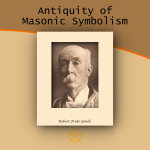 On the Antiquity of Masonic Symbolism Is the Symbolism of Masonry an inheritance derived from the old Masons who flourished before the era of the Grand Lodges (1717); or has it been borrowed from the Rosicrucians or others, after 1717? |
 Mason's Marks – from Egypt to Europe? Mason's marks have been a source of intrigue, not only to Freemasons but to historians and archaeologists. The use of simple pictograms have been employed for millennia by artisans to identify their work. But where did they originate and why? |
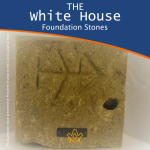 The White House Foundation Stones Further to the articles in our series on the history of the stone masons, we have a rather intriguing addition. During the 1950's renovation of the White House, President Truman retrieved more than 100 stone blocks with stonemasons marks. |
 What the Goose and Gridiron Tavern is in the ancient annals of London Freemasonry, The Green Dragon Tavern is to the memories of the Free-mason, of Boston and New England. |
 Auschwitz concentration camp: video photo article taken in 2013 |
 There are two things of importance happening this day - 27 January |
 Two approaches regarding the understanding of Freemasonry |
 Masonic Research in England c1930 An article which appeared in an American Masonic magazine, c1930 and which was reproduced in England, provoking a little controversy. |
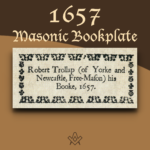 Masonic bookplates the ‘Brethren’s spiritual coats of arms and marks’ |
 The Unlawful Societies Act of 1799 Rebellious Freemasons and the 21st century |
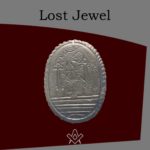 In 1912, Sarah Dowd of Dromore, Ireland, found a Masonic jewel dated 1517 - a date two hundred years before the establishment of Grand Lodge... |
 Freemasonry and Fascist Regime Interesting speech by the famous historian Prof. Aldo A. Mola, who links the fascist regime with the Masonic Associations. |
 Was famous Russian poet Alexander Pushkin a Freemason? And if so, was he a member of the lodge ‘for which all the lodges in Russia were destroyed’? |
 The Importance of Masonic Research Why is accurate - or authentic - Masonic research so important? The importance of making a daily advancement in Masonic knowledge is something that The Square is passionate about promoting. |
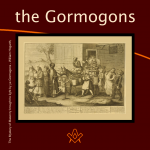 The Antient Noble Order of the Gormogons had a brief existence in the eighteenth century; they left few records or accomplishments, |
masonic knowledge
to be a better citizen of the world
share the square with two brothers

click image to open email app on mobile device










